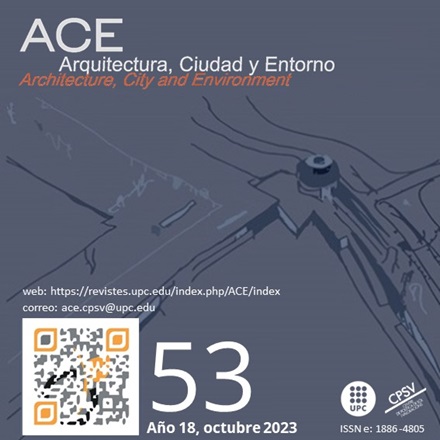Demographic Aging and Accessibility to Green Areas. An Intraurban Analysis of Spanish Cities
DOI:
https://doi.org/10.5821/ace.18.53.12073Keywords:
active ageing, Spanish urban areas, urban public space, urban green spacesAbstract
The movement of age-friendly cities, which emerged from the paradigm of active and healthy aging promoted by the World Health Organization, identifies the aspects that facilitate the quality of life of the elderly. The characteristics of the space in which they reside relate closely to their physical and psychological well-being. In the urban environment, parks and gardens occupy a prominent place because they favor physical and social activity. This work investigates the essential characteristic of access distance to urban green spaces (UGS) from the most demographically aged areas of Spanish cities. In contrast to the existing case studies, it takes a global approach by analyzing the 86 urban areas in the Statistical Atlas of Urban Areas. The census sections with a high proportion of people aged 65 or over according to the Continuous Register Statistics (“Padrón”) are related to the proximity to the UGS obtained from the Land Occupation Information System of Spain. The method used is that of Euclidean distances from the edge of the census tract, applying it to 100, 200 and 300 meters. The results show that the environments with the highest presence of aged population in Spanish urban areas have greater accessibility to the UGS than the set of census tracts, at any of the distances analyzed. Despite this, more than 30 % of the sections demographically aged are more than 300 m from the UGS, having detected areas under-equipped with green spaces.
Downloads
Published
Issue
Section
License
| INTELECTUAL PROTECTION CRITERIA |
At this moment, it is count with the "Oficina Española de Patentes y Marcas", while global protection it is being processed by the World Intelectual Property Organization (OMPI/WIPO). Nevertheless the International Standard Serial Number Office (ISSN) has given the following numbers ISSN: 1886-4805 (electronic version) and 1887-7052 (paper version). All articles will be peer reviewed, using double blind reviewing. |
| COPYRIGHT |
The article contents and their comments are authors exclusive liability, and do not reflect necessarily the journal editor commitee's opinion. All ACE published works are subject to the following licence CC BY-NC-ND 3.0 ES http://creativecommons.org/licenses/by-nc-nd/3.0/es/ It implies that authors do not hold nor retain the copyright without restrictions but only those included in the licence. |


































